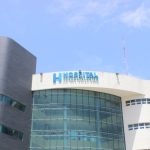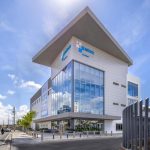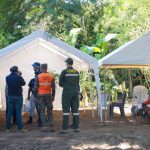Dominican Republic studies feasibility of commercial spaceport

Santo Domingo.- The Dominican Republic has initiated a feasibility study for establishing a commercial spaceport near the equator. Florida-based Launch on Demand, specializing in launch licensing and technical services, announced on May 22 that it will lead the six-month study for the Directorate of National Intelligence (DNI), the country’s newly reorganized national security agency.
Burton Catledge, CEO of Launch on Demand, stated that the study will focus on the Oviedo area in the south of the Dominican Republic. The study will include flight corridor analysis, climatology assessment, physical security evaluation, impacts on space, air, and sea activities, and elimination of frequency conflicts.
“Like many other countries, the Dominican Republic views access to space from its sovereign territory as a national security imperative,” said Catledge.
The study will examine the feasibility of vertical lift capabilities for orbital and suborbital missions, which would enhance the country’s ability to monitor satellites and address issues such as illegal migration, drug trafficking, and environmental damage.
“The agreement with the DNI focuses on short-term national security concerns but aims to expand rapidly to support the commercial space industry in Latin America,” Catledge told SpaceNews via email.
With capacity at Cape Canaveral and Kennedy Space Center becoming limited, launch companies are seeking cost-effective, secure locations with near-equatorial access to space.
Catledge, who previously served as operations group commander for the Air Force’s 45th Space Wing, noted that national spaceports can boost a country’s profile, reduce dependence on other nations, and protect orbital and suborbital missions from prying eyes.
Phil Smith, an analyst at BryceTech, added that spaceports can drive political and regulatory activity to support an emerging space industry, benefiting aviation, drones, and other sectors. Spaceports typically house research and development, higher education, and testing centers, along with launch pads.
Smith also noted that spaceports help strategically expand industrial capacities and repurpose abandoned or dormant assets like former air bases or missile test sites.
According to BryceTech, there are 31 proposed spaceports worldwide and around 56 sites capable of suborbital and/or orbital missions.
Catledge revealed that Launch on Demand is conducting similar feasibility studies for three other customers: two considering spaceports in Arizona and another with plans outside the United States.
















